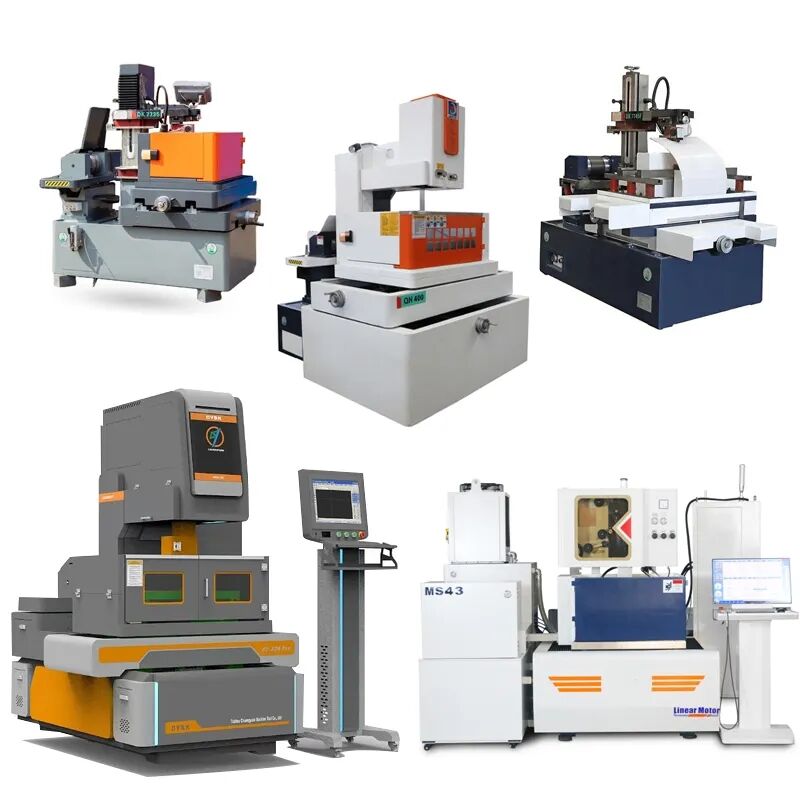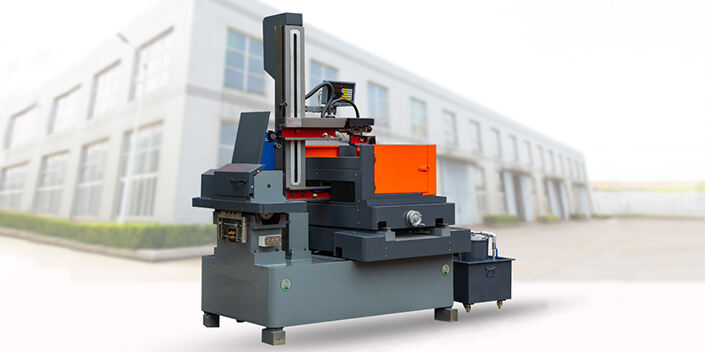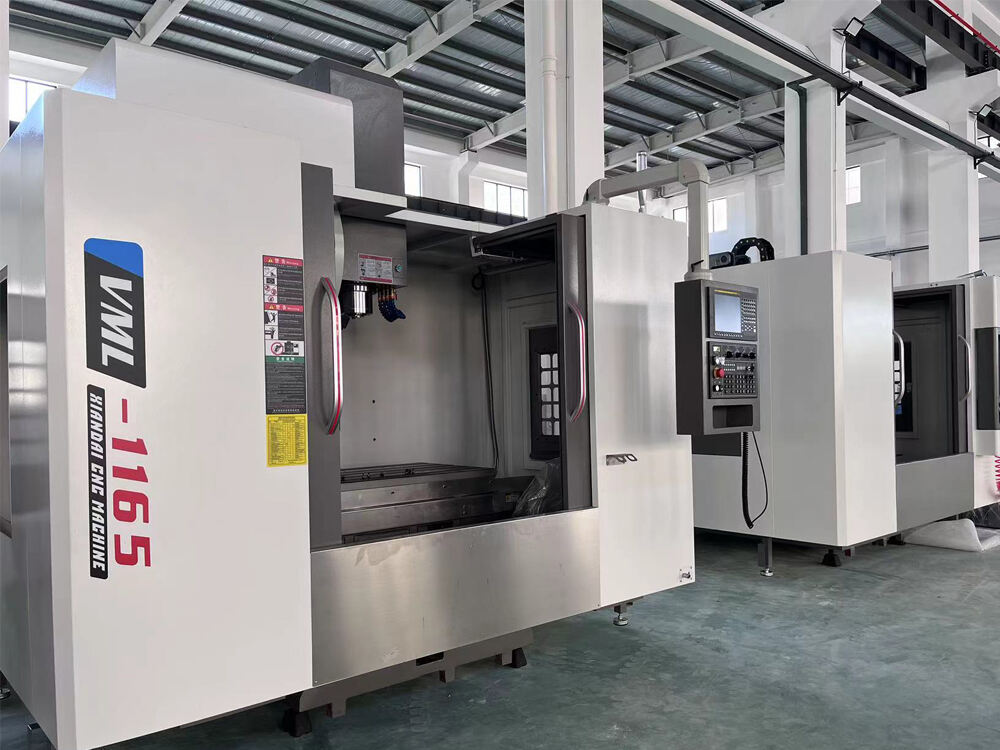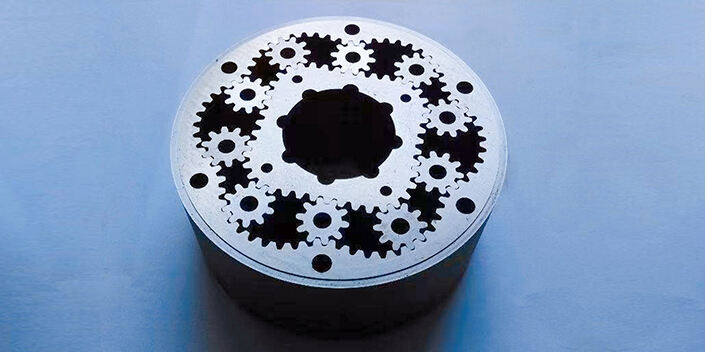Az EDM huzalvágó gépek hatása az szerszámgyártásra
A modern gyártás az elmúlt évek során jelentősen megváltozott a különféle technológiai áttöréseknek köszönhetően, amelyek teljesen átalakították a gyártóüzemekben folyó munka módját. Nézzük például az elektromos kisüléses megmunkálást, azaz az EDM-t, különösen a drótszúró technikáját. Ez a módszer különösen elterjedt a szerszámkészítő körökben, ahol a pontosság a legfontosabb. Az alábbiakban bemutatjuk, hogyan működnek valójában ezek a drót-szúró gépek, miért olyan értékesek más módszerekhez képest, mely iparágak támaszkodnak rájuk nap mint nap, valamint gondolatokat is megosztunk arról, hogy ez a technológia hová tarthat a gyártás egyre fejlődő tájképében.
Az EDM drótvágó gépek megértése
Mi az a Wire EDM?
A huzalos szikrakisültes munkagép vékony, árammal átjárt fémhuzal segítségével működik, amely különféle anyagokon halad keresztül. Ezt a technikát időnként szikra-eróziónak is nevezik, amely a kis elektromos szikrákra támaszkodik, amelyek az elektromosan vezető anyag apró darabjait megolvasztják. A legtöbb műhely ezen műveleteket speciálisan kezelt vízzel töltött tartályokban végzi, amelyek a vágási folyamat során hűtő- és szigetelőként is szolgálnak. A víz segít a hőfelhalmozódás szabályozásában, miközben fenntartja a különböző fémek és ötvözetek pontos vágásához szükséges törékeny egyensúlyt.
Az EDM technológia története és fejlődése
Az EDM eredete valójában a 1700-as évekig nyúlik vissza, amikor egy Joseph Priestly nevű fickó észrevette, hogy az elektromosság bizonyos anyagokat kikezdhet kísérletek során. Ugorjunk előre a 40-es évekbe, amikor a mérnökök ténylegesen működő gépeket építettek, amelyek vékony drótszálakat használtak elektródaként fémvágáshoz. Ma az EDM-t széles körben használják a gyártóiparban, mivel rendkívül pontosan vág, miközben magas hatékonyságot biztosít a hagyományos módszerekhez képest. Számos üzem részesíti előnyben összetett alkatrészeknél, ahol a hagyományos megmunkálás egyszerűen nem elegendő, szó szerint.
Hogyan működik a drótos EDM
A huzalos eróziós megmunkálás során egy vékony, általában bronzból vagy molibdénből készült huzal fut két orsó között, amit egy CNC rendszer pontosan a megfelelő helyen tart. Ahogy a huzal közeledik a vezető anyaghoz, amit vágni kell, apró elektromos szikrák ugranak át a résen. Ezek a szikrák hőt termelnek, amely megolvasztják, sőt akár gőzzé is alakítják az anyagot, és a dielektromos folyadék elviszi az így keletkezett részecskéket. Mivel a vágás során a huzal és az anyag között nem történik tényleges érintkezés, a megmunkált anyagra nem hat mechanikai terhelés. Ez azt jelenti, hogy a megmunkált alkatrészek szerkezeti szempontból sértetlenek maradnak, ami különösen fontos a finom alkatrészek megmunkálásánál.
Az EDM huzalvágás előnyei az eszközgyártásban
Pontosság és pontosság
A huzalos eróziózás igazán jól teljesít szűk tűrések esetén, gyakran elérve a ±0,0001 hüvelyk pontosságot. Ez a pontosság jelenti az egész különbséget bonyolult tervezési feladatoknál és nehezen megvalósítható formák esetén, amelyek egyszerűen nem készíthetők hagyományos megmunkálási módszerekkel. Az ilyen technológiával elérhető részletesség lehetővé teszi a gyártók számára, hogy olyan formákhoz, sablonokhoz és alkatrészekhez jussanak, amelyek mindig megfelelnek az igényes műszaki előírásoknak. Azok számára, akik repülőgépipari alkatrészeket vagy orvostechnikai eszközöket gyártanak, ahol minden tizedes pontosság számít, a huzalos eróziózás nemcsak előnyös, hanem szinte elengedhetetlen.
Az anyagi hulladék csökkentése
A drót-EDM különösen hatékonyan használ hulladékot. A vágási szélesség rendkívül keskeny, gyakran kevesebb mint 0,015 hüvelyk, ami azt jelenti, hogy a folyamat során kevesebb anyagot távolítanak el. Ez nemcsak a nyersanyaggal kapcsolatos költségeket takarítja meg, hanem hozzájárul a gyártás fenntartható gyakorlataihoz is.
A termelés költséghatékonysága
Az elektromos kisüléssel történő drótvágás technológiájának kezdeti költsége valóban jelentős lyukat üthet a költségvetésben, de a legtöbb üzemben kifizetődőnek bizonyul hosszú távon. A rendszer egyszeri beállítást követően főként önállóan működik, és mivel a darabokat egyetlen folyamattal teljesen elkészíti, nincs szükség az emberi munkaórát felemésztő plusz lépések elvégzésére. Az igazi megtakarítást azonban a gépek pontossága jelenti. A rendkívül szűk tűréseknek köszönhetően a gyártók gyakran teljesen kihagyják a polírozási és befejező fázist. Olyan vállalatokat is láttunk, amelyek a drótvágásra való áttérés után akár 30%-kal is csökkentették gyártási költségeiket, mivel már nem pazarolnak annyi anyagot vagy időt az újragyártásra.
A drótvágó gépek alkalmazásai
Az EDM technológiát használó iparágak
A drót EDM alkalmazást talál különböző ágazatokban, mint például a légikereskedelem, az autóipar, az orvosi eszközök gyártása és a formák gyártása. Sokoldalú tulajdonsága lehetővé teszi a géphez nehéz anyagok hatékony feldolgozását, beleértve a titánt, a szerszámcsalagokat és a szuperötvözeteket.
Közös összetevők és gyártott termékek
Néhány gyakori alkalmazás a szerszámformák, a lemez alkatrészek és a precíziós alkatrészek gyártása. Például az orvostudomány területén a drótot bonyolult műszerek és a sebészeti eljárásokhoz elengedhetetlen alkatrészek gyártásához használják.
Ügyes esetkutatások a sikeres végrehajtásokról
Sok gyártó sikeresen integrálta a drót-EDM-t a gyártási vonalaiban. Egy esettanulmány kimutatta, hogy egy űrkutató vállalat 40%-kal csökkentette a komplex motorkomponensek létrehozásának idejét a hagyományos megmunkálási módszerekkel összehasonlítva, ezzel bemutatva a drót EDM képességeinek hatékonyságát.
A drót-EDM és a hagyományos megmunkálási módszerek összehasonlítása
A teljesítménybeli különbségek
A hagyományos megmunkálási módszerekkel összehasonlítva a drót EDM-folyamat gyakran hatékonyabb a érintés nélküli vágási jellegének köszönhetően, amely elkerül a szerszámkárosodáshoz és az anyag torzulásához kapcsolódó problémákat.
Az anyagi összeegyeztethetőség
A drót EDM széles körű vezetős anyagokat vághat, így sokszínűbb, mint a hagyományos módszerek, amelyek nehezen kezelhetik a keményebb anyagokat.
Működési Hatékonyság
A drót-EDM gépek, mint magasan automatizált folyamat, jelentősen csökkentik az emberi beavatkozást és hibákat, így a gyártás minősége idővel folyamatosan változik.
A vezetékvágó technológia jövőbeni tendenciái
Felsőfokú technológiák és innovációk
A vezeték-EDM technológia fejlődése folytatódik. Az olyan újítások, mint az intelligens CNC rendszerek, amelyek az AI-val integrálódnak a előrejelző karbantartás és optimalizálás érdekében, mind a hatékonyságot, mind a pontosságot javítják.
Fenntarthatóság az EDM-gyártásban
A fenntarthatóságra való növekvő hangsúllyal a drótvágás anyagkárát és energiatakarékos működését tekintve összhangban áll a modern gyártás környezetbarát irányváltásával.
A gyártási folyamatokra gyakorolt hatás
Ahogy az iparágak régebbi technikákból fejlettebb módszerekre térnek vissza, a drót EDM vezető szerepet tölt be a kiváló minőség, hatékonyság és pontosság biztosításában, végül pedig a termék jobb teljesítményéhez vezet az alkalmazásokban.
Összegzés
Az EDM vezetékeltávolító gépek mára szinte elengedhetetlenné váltak a szerszámok gyártásában. Valami különlegeset kínálnak pontosság szempontjából, amit más módszerek egyszerűen nem tudnak felülmúlni, ráadásul hosszú távon költséghatékonyabbak, és környezetbarátabbak is. Ezt a technológiát mára széles körben használják repülőgépipari alkatrészeket medikai eszközöktől való gyártásáig. És ha a jövőt nézzük, ahogy a gyártók egyre szigorúbb tűrések és zöldebb gyártási gyakorlatok felé törekednek, az EDM vezetékeltávolítás valószínűleg még nagyobb szerepet fog játszani a jövő termékeinek előállításában, mint amit jelenleg betölt.
Az új technológiák folyamatos értékelése és integrálása révén a gyártók biztosíthatják, hogy egyre összetettebb piacon is versenyképesek maradjanak. Akár a működési hatékonyság javítása, akár a termékminőség javítása révén az EDM drótvágó gépek valószínűleg a gyártási innovációk élvonalában maradnak.
Maradjon velünk, hogy többet megtudjon a gyártási technológiákról, amelyek előre viszik az iparágakat!
Az EDM technológiáról további olvasmányokhoz olvassa el a kapcsolódó cikkeket alkalmazásairól és előnyeiről.





